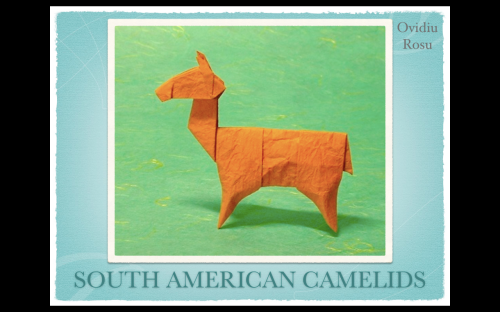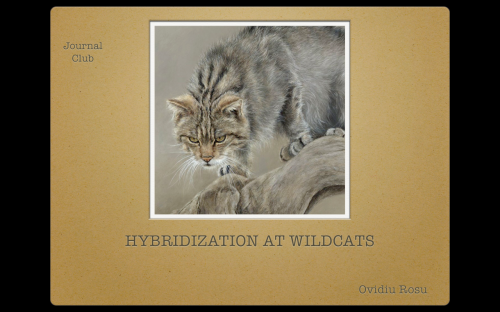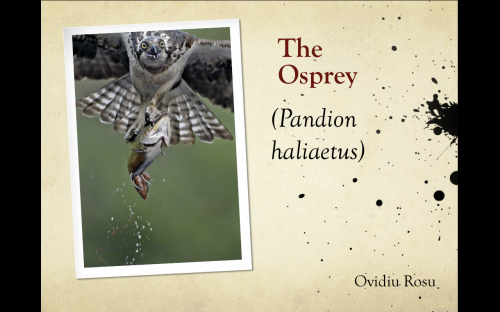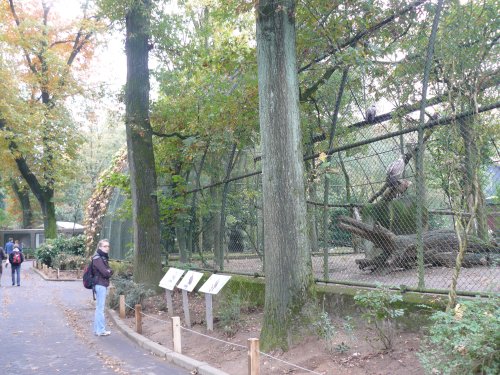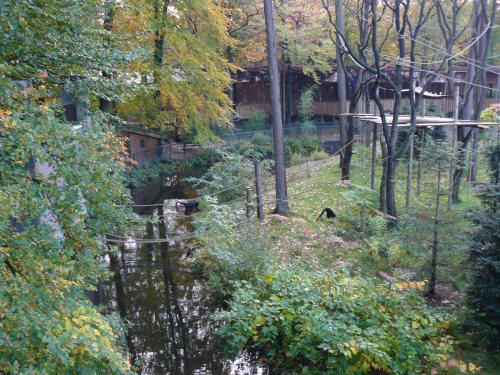Archive for February, 2009
Pathology of Reproduction, Intoxications and Tumors in South American Camelids
Posted in Presentations on 28/02/2009| Leave a Comment »
Field Use of Isoflurane and Air Anesthetic Equipment in Wildlife
Posted in Presentations on 25/02/2009| Leave a Comment »
ABSTRACT
Anesthesia equipment has been modified to permit the delivery of isoflurane in ambient air as the carrier and to be fitted with circuitry adaptable for different species and anesthetic situations for field operations. Preliminary empirical studies at low altitude in a range of small mammalian and avian species demonstrate the suitability of this combination and these techniques for inducing and maintaining anesthesia in clinically normal patients undergoing relatively minor procedures. The equipment has also been used to deepen and prolong anesthesia in several larger species, including great apes and large cats, after induction with injectable agents. These techniques, in combination with pulse oximetry to detect hypoxemia, provide a cheap, robust, and portable inhalation anesthetic system for field situations that is not dependent on compressed gasses.
Summary
1. Field gas anesthesia is stable, have the facility for ventilation, and present the patient with low inspiratory resistance and freedom from rebreathing
2. Three configurations were used
3. The equipment is robust, lightweight -3kg
4. At 5-L/min airflow, output concentrations accorded fairly accurately with those set on the vaporizer
5. Especially useful in the orangutan, barbirusa and Brazilian tapir
6. During maintenance, attention was paid to the clinical result and not to vaporizer control setting
7. Postrelease ataxia, predation, or trauma may be minimized
8. Calibration at low flow rates is a particular problem with very small species
9. Pulse oximetry should be used during isoflurane and air anesthesia
10. At high altitudes there is the need for oxygen enrichment during spontaneous or controlled ventilation
Hybridisation in Wildcats
Posted in Presentations on 25/02/2009| Leave a Comment »
Are the wildcats’ populations throughout Europe loosing the integrity of their gene pool?
ABSTRACT
The widespread occurrence of free-ranging domestic or feral cats in Europe is raising fear that introgressive hybridization with wildcats ( Felis silvestris) populations might disrupt local adaptations, leading to population decline and loss of biodiversity. It is difficult to make estimates of the degree of admixture when the gene frequencies in the native population prior to admixture are unknown. The use of hypervariable DNA markers (microsatellites) and new statistical methods (Bayesian models), have improved the assessment of cryptic population structure, admixture analyses and individual assignment testing. Results indicate that wild and domestic cat are genetically distinct in central and southwest Europe, but introgressive hybridization can be locally pervasive (Scotland, Hungary, Sardinia), and that conservation plans should be implemented to preserve the integrity of the gene pools of wild populations.
Summary
1. Hybridization with translocated or domesticated populations of cats is increasing the risks of genetic deterioration and extinction of the wildcat
2. In Scotland the genetic markers indicated substantial gene flow from the domestic to the wild-living population
3. In southern and central Europe, Bayesian clustering showed that wildcats were assigned to distinct clusters, but that they are extensively admixed in the sampled location in Hungary
4. In Italy the existence of many ‘‘private’’ alleles suggests that between wild and domestic cats there is little gene flow, with the notable exception of Sardinia
5. Using improved markers and more then 20 microsatellite loci would allow a better monitoring of hybridization
Specific LH Patterns in Elephants
Posted in Presentations on 24/02/2009| Leave a Comment »
Elephants in captivity are not self-sustaining and to manage this species better, a more complete understanding of its reproductive physiology is needed. One of the unique endocrine feature of the elephant is the ‘‘double luteinizing hormone (LH) surge,’’where two LH-peaks surges occur during the follicular phase of the cycle. How ist that posible?
ABSTRACT
1.Elephants in captivity are not self-sustaining, and their numbers are decreasing, facing possible extinction because of historically poor reproductive performance. 2 Thus, knowledge of normal reproductive physiology is necessary: during the follicular phase, elephants exhibited a typical LH pattern: approximately 18-20 days prior to ovulation, a 1-day LH-peak (anovulatory LH) concentration can be distinguished, which may result in a temporary rise of progesterone. A second LH-peak (ovulatory LH) occurs just prior to ovulation 3. The studies revealed hormonal particularities, such as the existence of two waves of estrogen excretion during the follicular phase of the elephant estrous cycle, each of which stimulates an LH surge. Urinary progestins are baseline throughout most of the follicular phase, increasing 2–3 days before the ovLH surge and continuing into the luteal phase. 4. Most laboratory techniques fail to measure any progesterone in the blood during the follicular phase in elephants. The most accurate results are obtained by using a Radio Immuno Assay(RIA). Urinary estrogen monitoring appears to be a reliable method for characterizing follicular activity in the elephant
Summary
– Elephants exhibited a typical LH pattern, with an anovulatory LH (anLH) surge occurring approximately 21 days before the ovulatory LH (ovLH) surge
– Fertilization can only result from mating during estrous preceded by the pre-ovulatory LH-peak(ovLH), which occurs immediately prior to the rise in progesterone
– Urinary estrogens declined to baseline for 2 weeks before increasing again to peak concentrations on the day of the ovLH surge.
– LH monitoring daily during the non-luteal phase is necessary for artificial insemination programs.
-To monitor the estrous cycle in elephants gestagens should be determined in blood (progesterone) or urine (pregnanetriol).
– Progesterone levels vary greatly depending on the machine and technique used
– In contrast to serum analyses, urinary estrogen monitoring appears to be a reliable method for characterizing follicular activity in the elephant
– The most accurate results are obtained by using a Radio Immuno Assay(RIA)
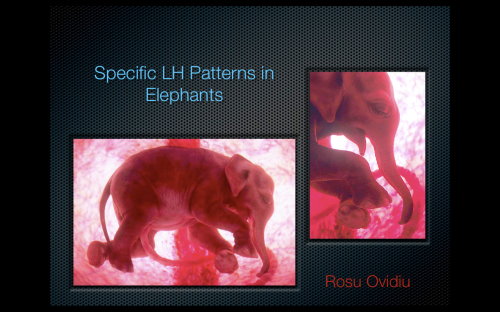 (more…)
(more…)
European Status of the Osprey
Posted in Presentations on 24/02/2009| 2 Comments »
ABSTRACT
1. The Osprey (Pandion haliaetus), is a diurnal, fish-eating bird of prey. It is a large raptor that tolerates a wide variety of habitats, presenting specialized physical characteristics and exhibits unique behaviors to assist in hunting.
2. At the end of the nineteenth century Ospreys bred throughout almost all of Europe. The decline was caused by the increasing pressure from collectors in the beginning of the 20-th century, the use of pesticide like DDT in 1950-1960, acid rain and a consequent acidification of water bodies, human disturbance, and changing fishing practices. In Austria, Ospreys became extinct as a breeding species in 1930th period. Presently 7800-9400 osprey pairs breed in Europe, distributed as follows: 90% in Finland, Sweden and Russia; 8% in eastern Germany, Poland, Belarus, Estonia, Latvia, Lithuania; 3% in Norway and Scotland; and 1% in southern Europe.
3. The only European re-introduction project is currently undertaken at Rutland Water, United Kingdom. Only human persecution and habitat alteration are currently a problem that could interfere with an Osprey reintroduction program in Austria (ex: the forestry practices may destroy breeding habitat).
4. One of the most efficient techniques for restoring raptor population is considered to be the Hacking Tower technique.
Burgers Zoo, Arnhem, Holland
Posted in Zoos & Enclosures on 14/02/2009| 2 Comments »
Thursday 16th 10 2008
Burgers’ Zoo, Arnhem, Holland
Antoon van Hooffplein 1
6816 SH Arnhem
+31-264 450 373
www.burgerszoo.nl
Number of visitors: 1.5 million per year
Our guide was the curator of the Zoo.
I consider it to be a typical big Zoo, which tries to have a collection of many and different species of animals. The designers created different theme areas to cover the most interesting parts of the world eg.: the Safari, the Ocean, the Bush, etc.
Apenheul Primate Park, Holland
Posted in Zoos & Enclosures on 04/02/2009| Leave a Comment »
Apenheul Primate Park
J.C. Wilslaan 21-31
7313 HK Apeldoorn, Holland
Phone: + 31-555 215 214; +31-653 865 823
www.apenheul.com
Veterinarian in charge: Jeanette van de Wal
Opened from March until the end of October
From the architectural and enrichment point of view I consider Apenheul to have the best design of all the zoos that I have had the opportunity to visit until now.
The peculiar philosophy of this zoo is to keep as many species of primates as possible free range and mixed. The visitors are able to walk in the same areas as the animals, there is even the possibility of interactions but this should be avoided. The primates do not feel threatened, nor attack the visitors.
